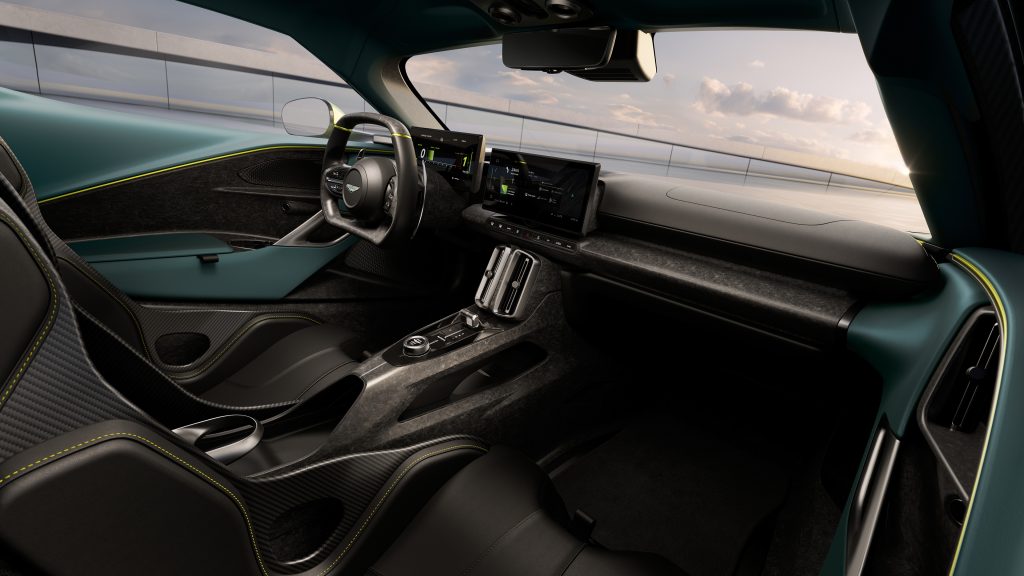Aston Martin has unleashed the final production version of the Valhalla supercar that’s built for battle against the McLaren W1 and Ferrari F80.
The mid-engined machine is described by Aston Martin as “a supercar of extraordinary scope.” So how does it live up that claim? Let’s dig into the detail.

With a thousand horses the bare minimum cost of entry to today’s supercar league, the Valhalla’s 1,064bhp hybrid powertrain ticks the bragging rights box. Doing most of the heavy lifting is a four-litre flat-plane crank V8 motor with a brace of turbos. Delivering 817bhp it’s the most powerful eight-cylinder ever fitted to an Aston. It drives the rear wheels via an eight-speed dual clutch transmission that incorporates and e-diff and an electric motor. An additional pair of e-motors drive the front wheels, with the total electrical output equating to an additional 247bhp.
The front axle motors mean the Valhalla can be driven in pure EV mode for around nine miles and also negate the need for a reverse gear as a quick polarity switch will spin the motors backwards for parking. The in-gearbox motor provides torque-fill between gearshifts to aid acceleration, and the independent operation of the front motors provides torque vectoring to assist with cornering.
The Valhalla is built around a carbon fibre tub, with a structure that’s said to be unique to Aston Martin. Aluminium subframes are attached and there’s push-rod front suspension with inboard springs and dampers at the front, while the rear end makes use of a five-link setup. DTX adaptive dampers are fitted all-round. Carbon ceramic disc brakes are installed, sized at 410mm up front and 390mm at the back, squeezed by six-piston and four-piston monobloc calipers respectively.

Additional braking power comes in the form a regenerative system for the hybrid setup and the car’s active aerodynamics. In Race mode the Valhalla’s front and rear wings shift position to immediately increase drag and shift the aero balance for improved stability. At 149 mph the Valhalla can produce 600kg of downforce. On the flipside there’s a DRS (Drag Reduction System) to make the Valhalla slippery enough to top 217mph flat out. With launch control deployed 0-62mph takes just 2.5 seconds.
Moving on to the design, you can make up your own mind, so we’ll just pick a few highlights, like the forward-hinged dihedral doors that cut into the roof, the F1-derived snorkel and the top-exit exhaust. Buyers can choose to leave the entire body in exposed carbon fibre, which can be tinted in red, blue or green, while traditionalists can pick from an unlimited paint palette. Six motorsports-themed liveries are also offered.

Although rather roomier inside Aston Martin says the interior also takes cues from its Grand Prix racing cars with a wraparound “Amphitheatre” cockpit. There’s a single carbon brace running the width of the cabin and the instrument panel and center display float atop it. Carbon is also used for the seats which can be trimmed according to taste with the aid of Aston Martin’s Q division.


Aston Martin intends to build 999 Valhallas starting from mid 2025 and priced around £850,000. That’s more than twice the amount of cars compared to the McLaren W1 and 200 more than the number of F80s Ferrari intends to make. The Aston is priced more keenly than the £2 million McLaren and £3m Ferrari, but it packs less power and weighs more than both.
Which of this new “Holy Trinity” would you cash in your crypto for?














